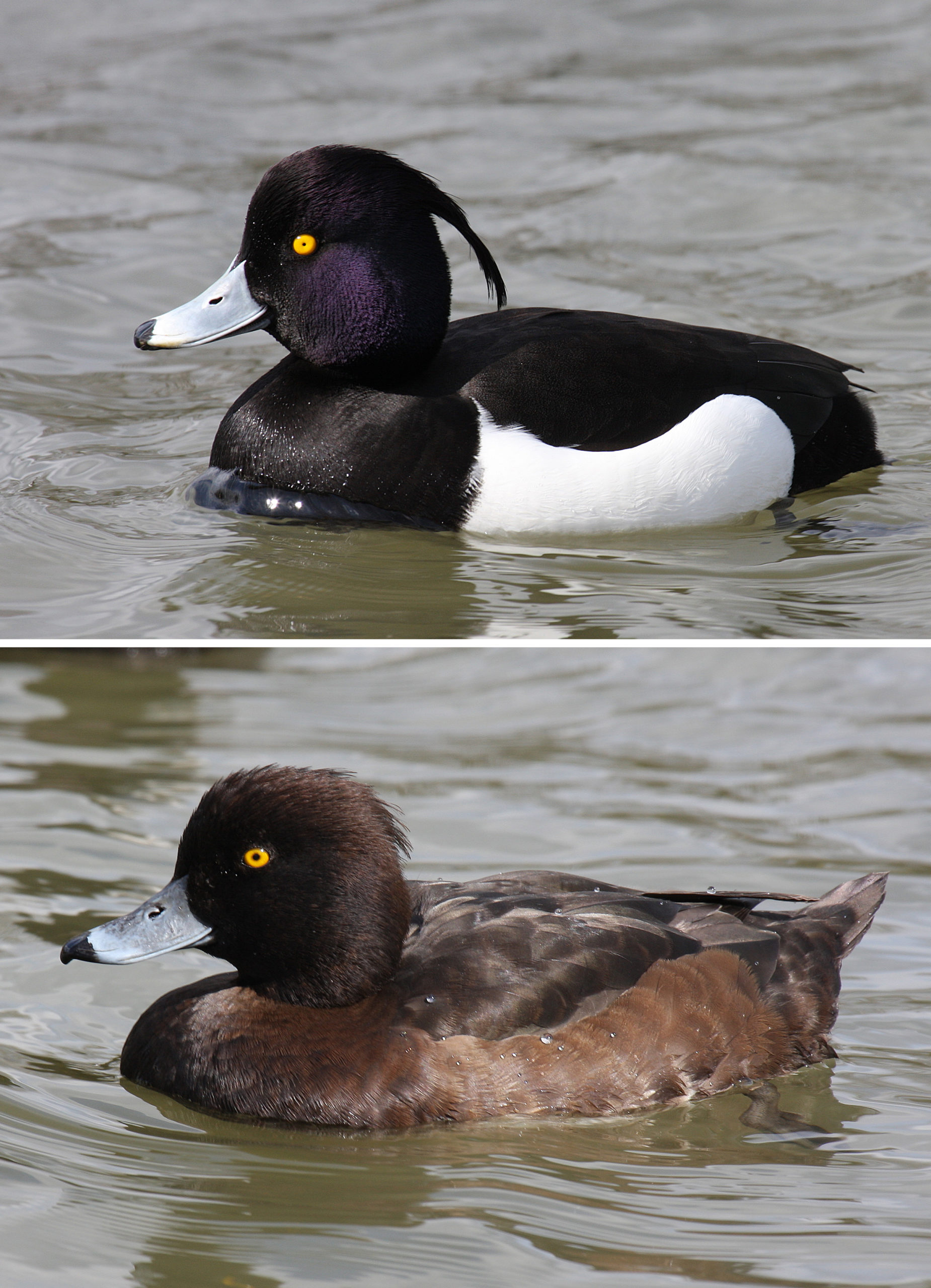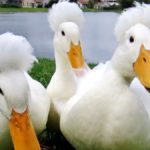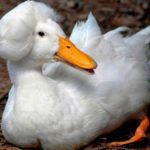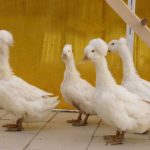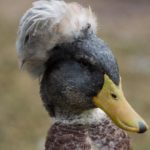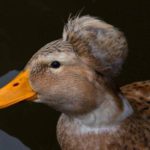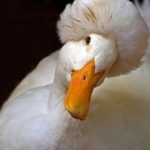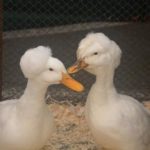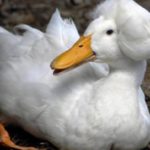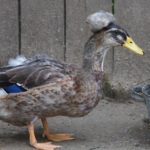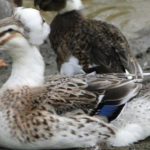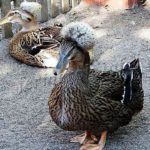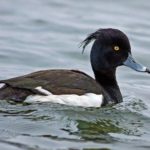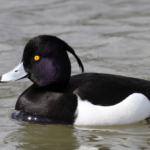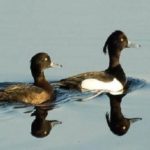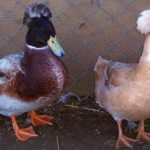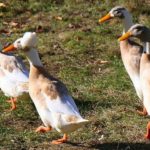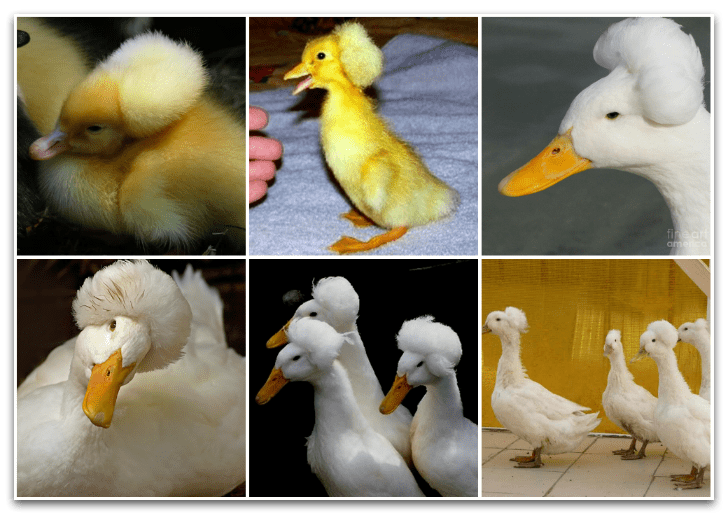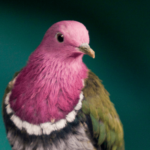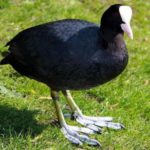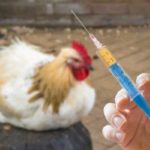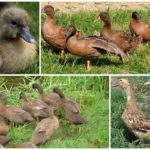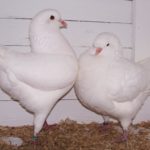All breeds of the ornamental tufted duck originated from the Chinese crested variety. The productivity of these birds is relatively low, but their decorative and original appearance allow them to be used as a living decoration for park and homestead ponds and lakes. Crested breeds are not capricious in nutrition and maintenance; even inexperienced people engage in poultry farming.
Story
It is impossible to find out exactly how the tufted duck appeared. Presumably, the Chinese crested fish was crossed with a wild drake.The resulting crested birds were brought to Europe from southeast Asia by the Dutch three centuries ago. Western European painters of the 17th and 18th centuries often depicted game with tufts in landscapes and still lifes. Gradually, the tufted duck spread throughout Europe. Today there are many domestic breeds with a tuft adorning their heads. There is also a wild black corydalis.
General description and characteristics
Each crested breed looks different, but there are external features that unite birds into one category:
- medium-sized, but strong and sinewy body;
- drake weight – up to 3 kg, female – 2 kg;
- elongated, moderately wide back;
- rounded, slightly convex chest;
- elongated, narrowed, flattened beak;
- neck of medium length, slightly curved forward;
- slightly developed paws and wings;
- hard, densely spaced feathers;
- a crest on the top of the head, consisting of long and thin feathers, sticking out like a cap;
- variety of colors determined by parental genes;
- active, non-aggressive behavior.
The richness of the beak and limbs depends on the color. With dark colors, the beak and paws are faded. Light colored birds have an orange beak. In each brood, a fifth of the ducklings are without a tuft, because the tufted head gene is cumulative, that is, it is lost if one parent does not have the specified trait.
The productivity of the rocks is low. The duck lays eggs from the age of 5 months and produces 50-60 eggs per year. One egg weighs no more than 80 g. Some individuals have increased egg production, they are capable of producing up to 100-120 eggs.
Varieties of Tufted Ducks
Despite its unimpressive productivity, the tufted duck is in demand among breeders; it is sold as an ornamental species. The most popular are Russian, Ukrainian, and Bashkir breeds.
Russian
The domestic breed duck has a harmonious build, muscular but not massive. The head is ovoid, the neck is curved. The limbs are strong, thick, covered with feathers down to the flippers. The belly is rounded. The wings are small, lie tightly on the body, and the flight feathers overlap each other crosswise. The eyes are brown, the paws are light orange, the color is white or motley. The fluffy cap on the head is a couple of tones lighter than the main color.
Bashkir
The miniature breed is distinguished by high productive qualities, variegated color, in which bluish-gray, black and brown shades predominate. On the head there is a large and dense crest, reminiscent of a pompom from a hat. Strong and developed wings are decorated with a pattern. The physique, although compact, is strong. The muscles are developed, the chest stands out noticeably forward.
Ukrainian
The tufted duck was bred in Ukraine by crossing common domestic and wild gray ducks.The result was a pearl-gray bird with a large build. The body is covered with brown specks. The short neck is white and transversely decorated with a dark stripe. The Ukrainian duck is active and mobile, so it gains muscle mass rather than fat.
Chinese
The variety is also called the crested shelduck. The Chinese have bred it for a long time; today the duck with a tuft is rare and is included in the Red Book. In terms of external characteristics and way of existence, it is a cross between a domestic and wild duck. The back is brown, the neck and belly are white, the chest is black with a green tint.
Tufted duck
This wild duck with tuft, living in the British Isles, in the northeastern regions of Europe, in the North of the Urals, in Western Siberia, the Volga region, and in the Far East. Thanks to its interesting color, the corydalis is popular among breeders of ornamental waterfowl.
The drake is larger than the female, its head, back and tail are black, and its chest and belly are white. The crest does not look like a hat, but like a long tassel, reaching 4 cm in males and 2.5 cm in females. The limbs are black, the irises of the eyes are yellow. The female is brown, with a white chest and gray beak.
Advantages and disadvantages
Subtleties of maintenance and care
It is possible to keep tufted ducks in spacious cages, but poultry houses with exercise pens and ponds are preferable. Birds do not do well when kept in crowded conditions. At 1 m2 the poultry house should have less than 4 individuals. If the livestock includes at least 15 individuals, then it is recommended to divide it into groups, making a separate spacious block for each.
The poultry house must be illuminated, clean, and ventilated. Since late autumn, artificial lighting sources have been installed. Optimal air humidity is 60-70%, summer temperature is 18-20 °C, winter temperature should not fall below +5 °C.
The tufted duck can exist without swimming. But still, in the absence of a natural body of water, it is worth placing a pool or large basin with water near the poultry house so that the birds splash around. The bedding in the poultry house is made of straw, sawdust, or a mixture of these materials. Replace regularly with fresh ones. Feeders are installed so that each individual has at least 15 cm in length.
Diet
The domestic tufted duck is not capricious in its diet and willingly consumes any food offered by its owner. The diet should be varied, its basis is grains and herbs. Birds are given food once a day.
It is recommended to include in the diet:
- juicy and dried herbs;
- whole and crushed grains;
- cereal sprouts;
- silage;
- boiled root vegetables (potatoes, carrots, turnips);
- wet mash;
- feed for poultry;
- vegetable peelings;
- chalk, shell rock.
To strengthen the body, ducklings are given cottage cheese and whey mash. During walking, the duck finds a significant part of the food itself, which makes keeping it economical. Swimming in a pond, birds forage for algae, plankton, and insects.
Breeding rules
The tufted duck reproduces both naturally and in an incubator way. In the first case, the maternal instinct shows well and does not leave the eggs and brood prematurely. The ducklings hatch strong, well-developed, and begin to feed immediately after drying out. They grow quickly. But in winter, growth slows down even with increased feeding. To preserve breed characteristics, chicks without a crest are discarded.

